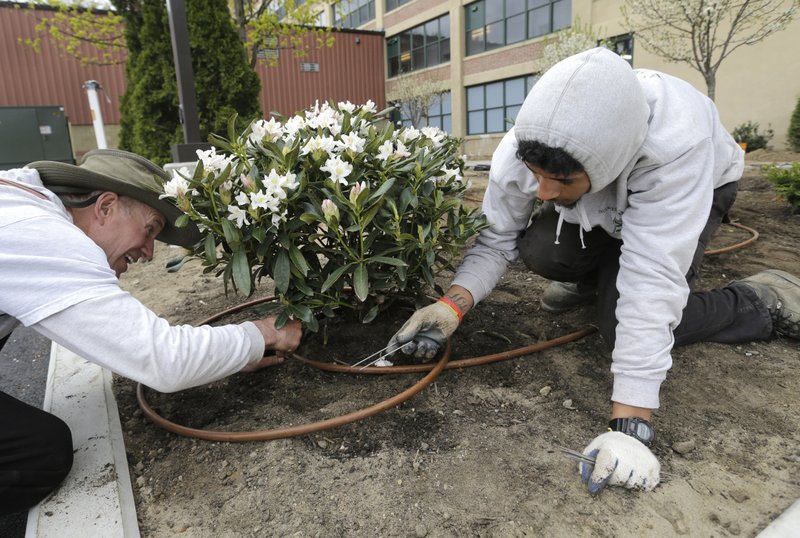WASHINGTON -- U.S. businesses added a modest 158,000 jobs in June, a survey found -- a sign that hiring has decelerated but remains healthy enough to lower the unemployment rate over time.
Payroll processor ADP said Thursday that the strongest job gains were in services, such as education, health care, hotels and restaurants. Manufacturers added 6,000 jobs, but construction firms and mining companies, which include oil and gas drillers, cut 6,000.
The report echoes other figures that show hiring has slowed over the spring, with job gains averaging just 121,000 from March through May, according to government data. Most economists chalk it up to a dwindling supply of workers as the unemployment rate falls.
Analysts predict that the government's jobs report, to be released today, will show 179,000 jobs were added last month, according to data provider FactSet.
The ADP survey covers only private businesses and often diverges from government figures.
Job gains have averaged 162,000 through the first five months of this year, according to the Labor Department, a solid total that has pulled the unemployment rate down from 4.7 percent in December to 4.3 percent in May, the lowest in 16 years.
That has left many businesses struggling to find the people they need to fill open jobs. There are more than 6 million open positions, a record level, according to a separate report from the Labor Department.
Mark Zandi, chief economist at Moody's Analytics, which helps compile the ADP report, said that a shortage of workers will likely worsen as the baby boom generation continues to retire. More than 10,000 Americans turn 65 every day.
"This is going to be the biggest problem businesses will face in the foreseeable future," Zandi said. An increase in immigration would help accelerate the growth of the work force, he added. "At this pace [of job growth] the tight labor market will continue getting tighter."
Businesses are also not, on average, offering higher pay to entice more applicants. Average hourly pay rose just 2.5 percent in May from a year earlier, below historical trends of about 3.5 percent in a healthy economy.
U.S. service companies expanded at a faster pace last month, pushed up by slightly better sales and a pickup in new orders.
The Institute for Supply Management, a trade group of purchasing managers, said Thursday that its services index rose to 57.4 in June, from 56.9 in May. Any reading above 50 indicates expansion. The report covers roughly 90 percent of the economy, from retail and hotels to accounting, government and construction.
The economy appears to be picking up a bit of steam after a sluggish first quarter, when growth was just 1.4 percent at an annual rate. Americans have stepped up their spending, and companies are restocking their shelves and warehouses with new goods. A gauge of inventories jumped 3.5 points to 57.5 last month, the trade group's report said.
Economists forecast the economy grew at roughly a 2.5 percent pace in the April-June quarter.
An Institute for Supply Management survey released Monday reported that factory activity expanded in June at the fastest pace in nearly three years.
The group's nonmanufacturing survey released Thursday "showed further strengthening from an already-robust level" in the services sector, Stephen Stanley, chief economist at Amherst Pierpont Securities, said in a note to clients.
Slightly more Americans applied for unemployment benefits last week.
Weekly applications rose by 4,000 to a seasonally adjusted 248,000, the Labor Department said Thursday. The less volatile four-week average rose 750 to 243,000.
The number of people collecting unemployment benefits has fallen 7.9 percent over the past 12 months to 1.96 million.
Information for this article was contributed by Christopher S. Rugaber and Josh Boak of The Associated Press and by Patricia Laya of Bloomberg News.
Business on 07/07/2017

